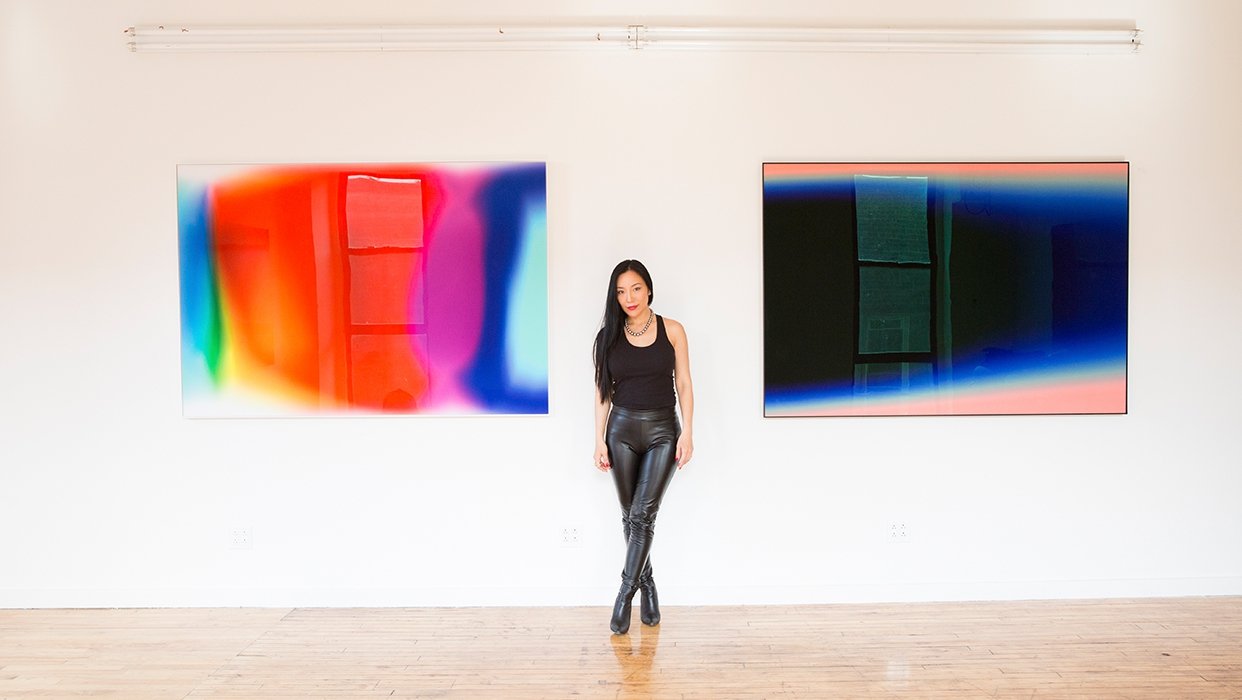Digital Art + NFTs For Beginners
Hello Next Up Collector Community!
Today I am bringing to you an introduction to digital art and NFTs. While I was attending The Courtauld for my master’s degree, I wrote their first dissertation on the Conceptual art origins of NFTs. While I was studying and writing , I also started working for a gallery in Mayfair who had a NFT and digital art division. I was working there for several months and learned a lot about the practical applications of the digital art world, what it means for artists, and what collectors should expect.
What is an NFT?
An NFT, or Non-Fungible Token, is a work of art that is fully digital from its conception to its sale. The term “non-fungible,” means the work cannot be replicated because it is entirely unique. The word “fungible” interestingly derives from the Latin verb fungi, meaning “useful,” or in English, “fungible,” meaning interchangeable.
An NFT is stored on a blockchain, which means its sale and storage is visible in an open format, a departure from the more elusive nature of the traditional art market. A blockchain, described as “decentralized ledger of all transactions across a peer-to-peer network,” thus provides a more transparent way to openly buy and sell digital art.
When buying NFTs, collectors will most likely use a form of cryptocurrency, such as Bitcoin or Ethereum, which is connected to their individual crypto wallets. These wallets are accessible on one’s personal devices and store one’s NFT collections.
Cryptocurrencies (like ETH) and NFTs use the blockchain for ownership verification.
What is the Benefit of an NFT for an Artist?
NFTs provide the industry with a point of reflection as it pertains to rewarding creativity. An NFT artist should expect to generate the royalty which they have personally set for themselves, with average percentages ranging from 0 % to 20%. What is unique about NFT sales, however, is that every time the work is resold in the future, the artist makes the same royalty on the resale.
This idea of largely rewarding the artist is very different from the tangible, traditional art industry.
With NFTs and digital art, the artist is rewarded time and time again for their initial creativity - an aspect unique to the digital art market.
What Should Collectors Know about NFTs?
Collecting within the digital art world is very different than collecting within the traditional art sphere. There are very strict and regulated practices when transactions occur between collectors and galleries in the art industry - a process called KYC (know your customer). Within digital art, that process does not exist - something individuals are working on regulating over time, but have not yet fleshed out. This means, a collector can remain largely anonymous, purchasing digital artwork through crypto currency, without their true identity ever being known or made public.
Collectors should also know that digital art collecting is very different from the traditional world - the players are different, the atmosphere is different, and the barriers to entry are different. From my experience, the community is significantly more laid back and relaxed than one may find in the traditional art market.
NFT collectors are often times anonymous, purchasing under usernames through their protected crypto wallets. This also marks a significant departure from the very strict barriers to entry with purchasing tangible artwork.
What Resources Do We Recommend for Learning More?
There are many resources available for those looking to invest in NFTs, such as online magazine publications like Right Click Save and Medium. Selling platforms like SuperRare also have extensive articles and publications available for their readers as well.
By using online resources, you can learn a lot about the current digital art offerings available. You can easily set up your crypto wallet to purchase by using a provider like Moonpay or others.
Who Are Some of the Digital Artists We Recommend?
There are many incredible artists in the space, but we recommend the following:
Krista Kim, Iskra Veltichkova, Andres Reisinger, Tyler Hobbs, Rhea Myers, and Sarah Meyohas
Also - check out important sales, such as Phillips and their Ex-Machina auction last year here.
Image to the left is Krista Kim with two of her works. Often times, digital artworks are displayed on large screens within gallery settings, or smaller ones in individual homes or offices.
Image belongs to Distinct.
Text from this article is protected and entirely owned by Next Up Collectors.




